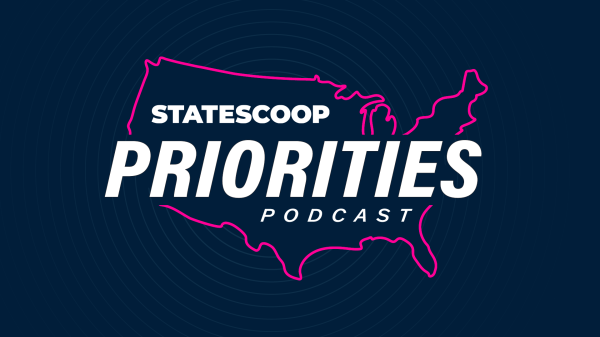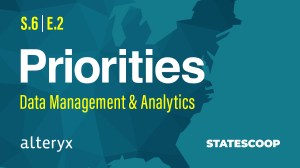
‘Converge’ as a group for better state IT budgeting, tech leaders say
In state government, budgeting for information technology is largely a matter of constantly scouting for new opportunities.
In the “Budget, Cost Control, Fiscal Responsibility” episode of StateScoop’s Priorities podcast, the top technology officials from West Virginia and Pennsylvania both say they were able to move away from structural budget deficits by finding opportunities in what initially appeared to be constraints.
“We’re looking at where there are opportunities to do something called ‘converge,’” says Pennsylvania Chief Information Officer John MacMillan. “How do we make those decisions as a group?”
Rather than make decisions at the agency or program-area level, MacMillan says his office attempts to convene the appropriate stakeholders from across government to maximize opportunities for cost savings and other benefits.
“We’re trying to differentiate project work from operational work,” he says. “And over the last couple of years, we’ve seen a slight shift in spending from really keeping the lights on, operations, to more business oriented projects. … Shared services has generated an avoided ask for more money of approximately $83 million.”
In addition to measurable cost savings, another key goal, he says, is to generate the less tangible business “value” that can come from enterprise-wide collaboration.
“In various states there are different demands in those business cycles and in any given year or any given administration, there might need to be an increased spend because a particular system or a particular technology needs to be modernized,” MacMillan says. “You have to look at spend in its context — what are you spending it on and therefore what results are you generating?”
In the interview, West Virginia Chief Technology Officer Joshua Spence says IT budgeting is married with discussions of risk management, particularly around cybersecurity. As the state’s top technology official, Spence says it’s his job to frame the conversation.
“People would ask ‘are we secure?’ And I had to caution them on asking that type of question,” Spence says. “That’s not how cybersecurity actually works.”
For example, Spence says, no one would think to ask whether all the state’s physical buildings are fireproof. Rather, he says, they are made of flammable materials and there’s risk associated with owning flammable buildings that must be considered and managed. Cybersecurity and the state’s IT assets should be thought of in the same way, he says.
Though uncovering precisely how a state is spending on IT can be challenging, he says, because costs are often tangled up with everything else.
“Spend can be embedded in various different procurements for various different reasons,” Spence says. “We’re very much in the beginning of this step.”
On the podcast:
- John MacMillan, chief information officer, Pennsylvania
- Joshua Spence, chief technology officer, West Virginia
- Colin Wood, managing editor, StateScoop
Things to listen for:
- West Virginia and Pennsylvania differ slightly in their approaches to IT budgeting.
- Both states are doing work with shared services to find cost efficiencies and to create business value.
- MacMillan says that a shift in processes in 2016 has unwound structural deficits for the first time in more than a decade.
- Pennsylvania’s IT office is borrowing some lessons from the private sector, but with a necessary twist.
- If a project is going to cost $10, it’s sometimes better to pay $11 to build something everyone can use, MacMillan says.
- In West Virginia, the budget can benefit from risk reduction, cost avoidance the value gained by maximizing the use of a tool.
- Spence says his department is working “hand in hand” with the state budget office to find ways to be more efficient.
Produced in partnership with the National Association of State Chief Information Officers, Priorities dives deep into each of the top 10 priorities of state CIOs outlined in NASCIO’s annual list.
Listen to archived episodes of Priorities from Season 4 (2019), Season 3 (2018), Season 2 (2017) and Season 1 (2016). Catch all of StateScoop’s podcasts on Soundcloud, Apple Podcasts, Spotify, Google Play, Stitcher or Alexa’s TuneIn.


